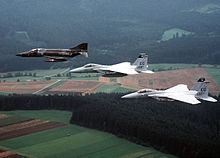
The 40th Flight Test Squadron is a United States Air Force unit. It is assigned to the 96th Operations Group, based at Eglin Air Force Base, Florida.

The 33rd Fighter Wing, sometimes written 33d Fighter Wing, is a United States Air Force unit assigned to Air Education and Training Command's Nineteenth Air Force. It is stationed at Eglin Air Force Base, Florida where it is a tenant unit.

The 319th Expeditionary Reconnaissance Squadron is a provisional United States Air Force unit stationed at Kadena Air Base, Japan, operating General Atomics MQ-9 Reaper unmanned reconnaissance vehicles.
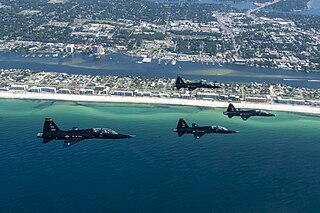
The 2nd Fighter Training Squadron, sometimes written as 2d Fighter Training Squadron, is an active United States Air Force unit, assigned to the 325th Operations Group at Tyndall Air Force Base, Florida.

The 4th Fighter Squadron, "Fighting Fuujins" is part of the 388th Fighter Wing at Hill Air Force Base, Utah. It operates the Lockheed Martin F-35 Lightning II aircraft, which replaced the unit's General Dynamics F-16 Fighting Falcons in August 2017. The 4th FS primarily conducts air superiority, strike, and close air support missions.

The 25th Fighter Squadron is part of the US Air Force's 51st Operations Group, 51st Fighter Wing, at Osan Air Base, South Korea. It operates the Fairchild Republic A-10 Thunderbolt II aircraft conducting close air support missions.

The 60th Fighter Squadron is a United States Air Force unit that is part of the 33d Fighter Wing at Eglin Air Force Base, Florida; It is tasked with training pilots on the Lockheed Martin F-35A Lightning II.

The 68th Fighter Squadron was one of the longest-serving fighter squadrons in U.S. Air Force history, remaining active almost continually for 60 years. Known as the "Lightning Lancers", on the morning of 27 June 1950 pilots of the 68th Fighter-All Weather Squadron flying the North American F-82 Twin Mustang made history by achieving the first aerial kill of the Korean War.

The 148th Fighter Squadron is a unit of the Arizona Air National Guard 162d Fighter Wing located at Tucson Air National Guard Base, Arizona. The 148th is equipped with the Block 20 F-16A/B Fighting Falcon. The squadron was first organized in England during World War II, moving to North Africa shortly after the invasion. It participated in combat in the Mediterranean Theater of Operations, where it earned a Distinguished Unit Citation. The squadron returned to the United States after V-E Day and was inactivated.

The 418th Test and Evaluation Squadron is an active United States Air Force unit assigned to the 53rd Test and Evaluation Group, and stationed at Davis-Monthan Air Force Base, Arizona, where it was activated on 1 October 2021.

The 39th Flying Training Squadron is part of the 340th Flying Training Group and is the reserve associate to the 12th Flying Training Wing based at Randolph Air Force Base, Texas.
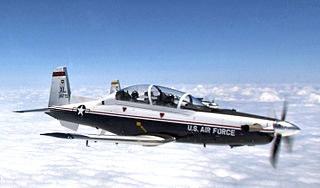
The 84th Flying Training Squadron was part of the United States Air Force 47th Flying Training Wing based at Laughlin Air Force Base, Texas. It operated Beechcraft T-6 Texan II aircraft conducting flight training.
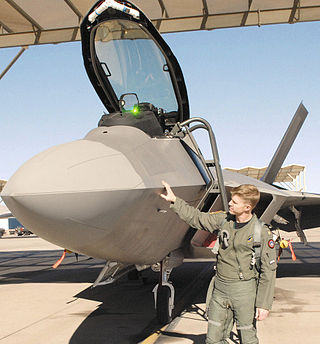
The 59th Test and Evaluation Squadron is a United States Air Force unit. It is assigned to the Air Combat Command 53d Wing, 53d Test Management Group at Nellis Air Force Base, Nevada.
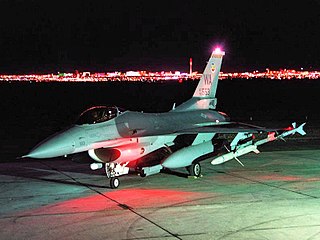
The 16th Weapons Squadron is a United States Air Force unit. It is assigned to the USAF Weapons School, based at Nellis Air Force Base, Nevada.

The 29th Test and Evaluation Squadron is an active United States Air Force unit. It is assigned to the 753d Test and Evaluation Group, at Eglin Air Force Base, Florida.

The 53rd Test and Evaluation Group is a group of the United States Air Force. It is a part of the 53rd Wing, and is headquartered at Nellis AFB, Nevada.

The 564th Air Defense Group is a disbanded United States Air Force organization. Its last assignment was with the 4707th Air Defense Wing, at Otis Air Force Base, Massachusetts, where it was inactivated in 1955. The group was originally activated as the 564th Air Service Group, a support unit for a combat group at the end of World War II but never deployed before it was inactivated in 1945.

The 33d Operations Group is the flying component of the 33d Fighter Wing, assigned to Air Education and Training Command of the United States Air Force. The group is stationed at Eglin Air Force Base, Florida.

The 325th Operations Group is the flying component of the 325th Fighter Wing, assigned to Air Combat Command of the United States Air Force. The group is stationed at Tyndall Air Force Base, Florida. It conducts training on the Lockheed Martin F-22 Raptor and commands one operational Raptor squadron. It directs the flying and support operations of two F-22 squadrons, a fighter training squadron, an operations support squadron and a training support squadron.

The 123d Fighter Squadron is a unit of the Oregon Air National Guard 142d Fighter Wing located at Portland Air National Guard Base, Oregon. The 123d is equipped with the McDonnell Douglas F-15C Eagle and Boeing F-15EX Eagle II.


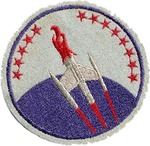
 ]
]
